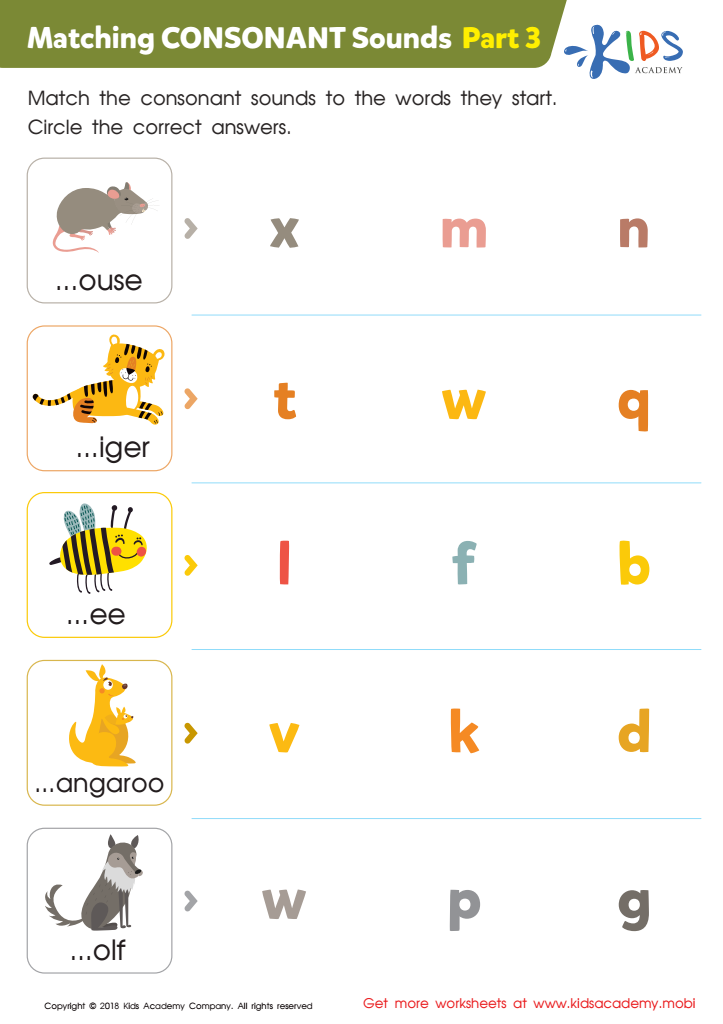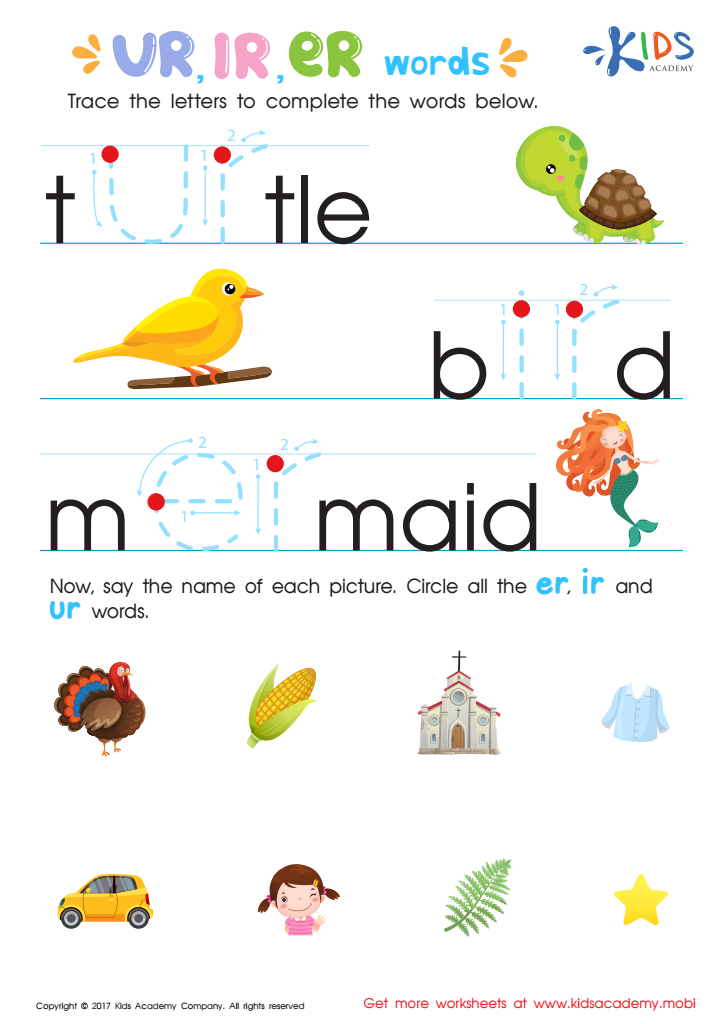Phonics recognition Normal Worksheets for Ages 3-8
16 filtered results
-
From - To
Enhance your child's early literacy skills with our Phonics Recognition Normal Worksheets, designed specifically for ages 3-8. These engaging, printable worksheets offer a range of fun activities aimed at helping children master essential phonics concepts. Each worksheet encourages sound-letter association and word recognition, laying a strong foundation for reading success. Tailored for young learners, the worksheets are colorful and interactive, ensuring an enjoyable learning experience. Ideal for classroom use or at-home study, our phonics worksheets support various learning styles and encourage confident young readers. Explore our collection to motivate your child and boost their phonics recognition skills today!


Letter K Sounds Worksheet


Letter Sounds: J Printable Worksheet


Sight Words with Blends Worksheet


Where Is the Digraph? Worksheet


Listen to the Sounds Worksheet


Phonics and Word Recognition: Assessment 1 Worksheet


Matching Consonant Sounds: Part 3 Worksheet


Let's Count the Sounds Worksheet


Matching Consonant Sounds: Part 2 Worksheet


Reading: Long I and Short I Sound Maze Worksheet


Let's Check for «i» Sounds Worksheet


Sounds Are Everywhere! Worksheet


Phonics and Word Recognition: Assessment 2 Worksheet


Phonics and Word Recognition: Assessment 1 ELA Worksheet


IR UR ER Words Worksheet


Match–Up Game: Beginning Sounds Worksheet
Phonics recognition is a crucial component of early literacy development for children ages 3-8, and parents and teachers should prioritize it for several reasons. First, phonics teaching helps children understand the relationship between sounds and letters, enabling them to decode words effectively. This foundational skill is essential for reading fluency, influencing a child’s ability to comprehend and enjoy texts as they progress.
Moreover, strong phonics skills lay the groundwork for vocabulary development and spelling proficiency. Children who grasp phonics are better equipped to tackle new words, fostering a love for reading and learning. Engaging with phonics also enhances listening skills, as kids learn to distinguish sounds and patterns in language, which is vital for effective communication.
Additionally, early mastery of phonics can help bridge the achievement gap, ensuring that all children, regardless of background, have access to the tools they need for academic success. Schools and parents working in tandem to reinforce phonics recognition can create a supportive environment that values literacy as a lifelong skill. Ultimately, a strong foundational grasp of phonics not only promotes academic achievement but also inspires confidence and a passion for learning in young children.
 Assign to My Students
Assign to My Students















